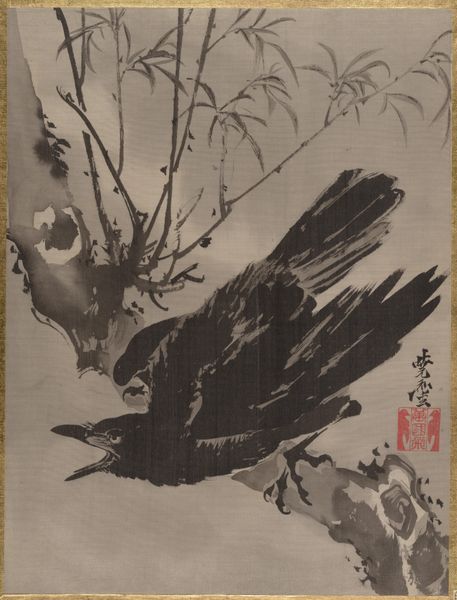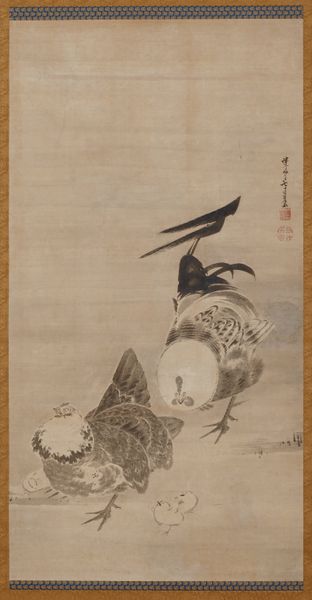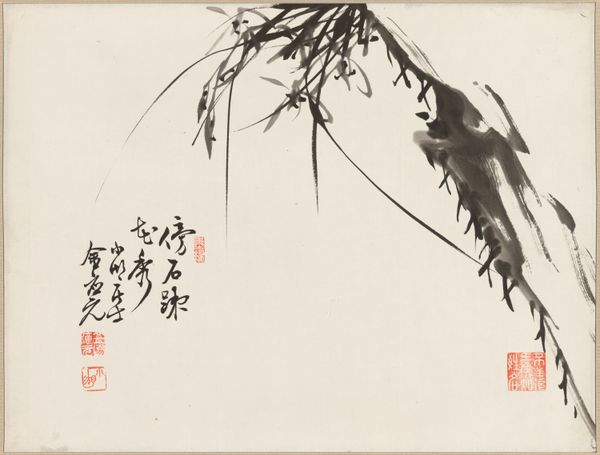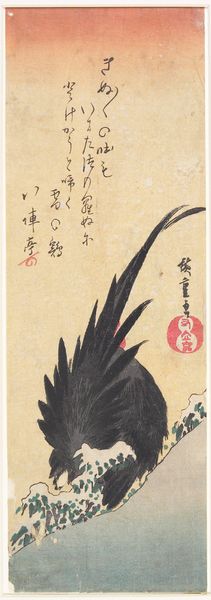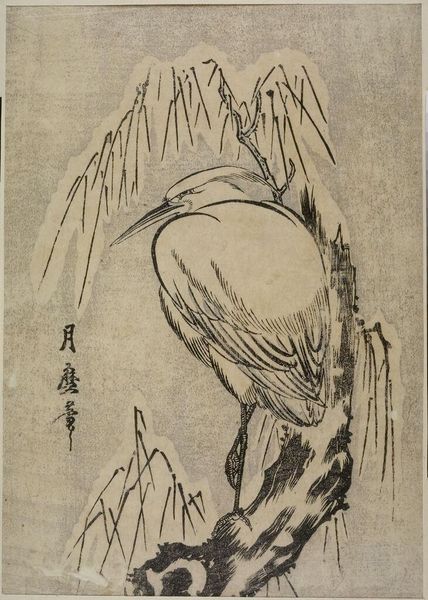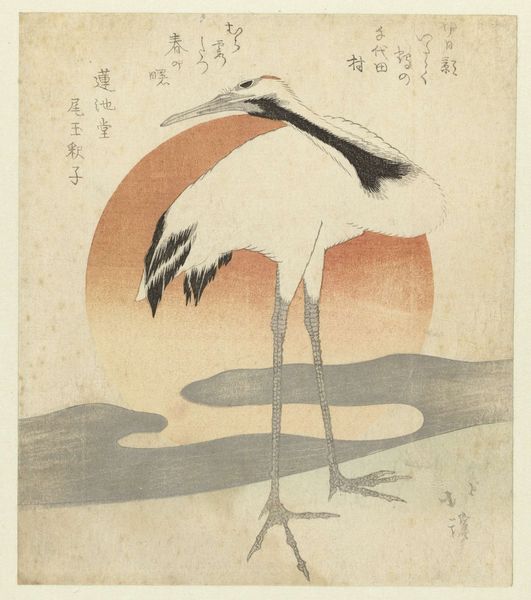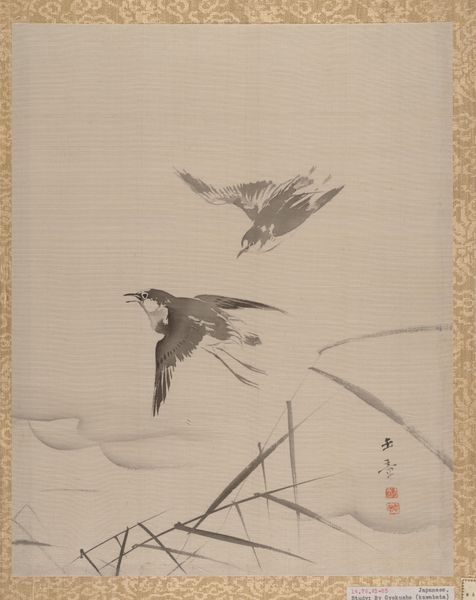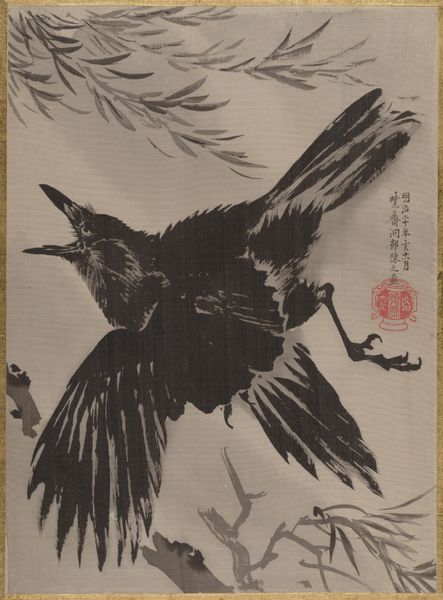
paper, ink
#
water colours
#
ink painting
#
asian-art
#
landscape
#
paper
#
ink
#
orientalism
#
calligraphy
Dimensions: 50 3/8 x 19 5/8 in. (127.95 x 49.85 cm) (image)
Copyright: Public Domain
Yang Gihun painted this scroll, Crane with Autumn Grass, in Korea during the late 19th or early 20th century. It’s made using ink on paper, with the image mounted on a silk scroll. The materials may seem simple, but the work reveals mastery and depth of cultural meaning. Consider how the ink, applied with controlled brushstrokes, vividly captures the textures of the crane's feathers and the delicate autumn grass. This isn’t just a painting; it’s a cultural artifact, reflecting the importance of calligraphy and brushwork in Korean art. The social status of the literati, the educated elite, is subtly embedded here. Yang Gihun engaged with a tradition that valued refined skill and the ability to evoke nature through minimalist means. It’s not simply about depicting a scene, but rather about embodying a philosophical outlook and refined sensibility. By understanding these elements, we see the artwork transcends mere representation and becomes a window into a specific time, place, and set of social values.
Comments
minneapolisinstituteofart almost 2 years ago
⋮
Yang Gihun was a member of the Royal Academy of Painting at the end of the Joseon Dynasty. Despite the official nature of his position, however, his style reflects the untrammeled spirt of a literati artist. He is best known for his paintings of birds and plants, which he rendered in a delightfully abbreviated and naive style. Yang's inscription alludes to his dream journey to Jiangnan in China: In dream [I were] in Jiangnan, [but] wind and rain is cold [here].(Meng li Jiangnan feng yu han)夢裏江南風雨寒
Join the conversation
Join millions of artists and users on Artera today and experience the ultimate creative platform.
